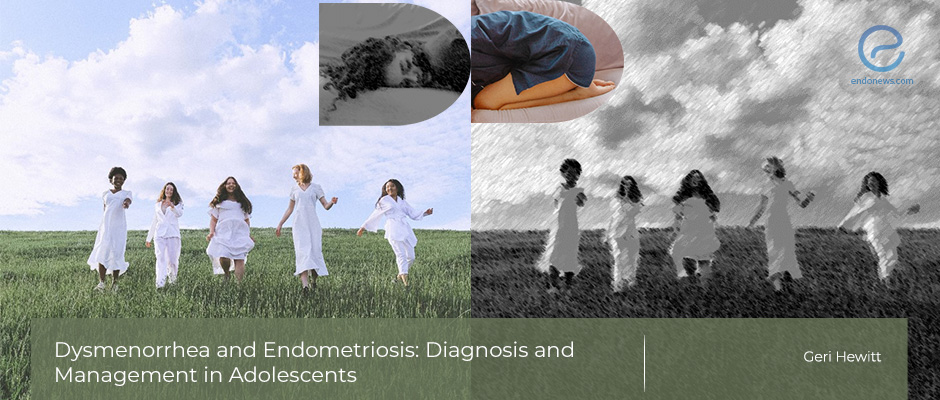Adolescent dysmenorrhea diagnosis and management
Jul 9, 2020
Endometriosis is the most common cause of secondary dysmenorrhea in adolescents.
Key Points
Highlights:
- Although the exact endometriosis prevalence is still not known, it can be encountered during adolescence as the most common cause of secondary dysmenorrhea.
Importance:
- Adolescent girls with non-responsive to empiric treatment for dysmenorrhea should be carefully evaluated for the differential diagnosis of endometriosis.
What’s done here?
- This review was conducted to clarify the reasons and the management of dysmenorrhea in adolescents, endometriosis is the most common cause of secondary dysmenorrhea.
- The prevalence, pathophysiology, clinical presentation, diagnosis, and management of adolescent endometriosis are described.
- To distinguish between primary and secondary dysmenorrhea is important as endometriosis is the likely cause of secondary dysmenorrhea.
Key results:
- The most common gynecologic complaint in adolescent girls is dysmenorrhea with an incidence of 60-93%.
- Although 42% of these girls had severe symptoms, they are underdiagnosed and undertreated.
- Other symptoms are abdominal pain, vomiting, appetite loss, dyschezia, diarrhea, weakness, low back pain, headache, sleeplessness, dizziness, depression, irritability, and nervousness that accompany dysmenorrhea. Primary dysmenorrhea and secondary dysmenorrhea are different.
- There are differences between primary and secondary dysmenorrhea in terms of pathophysiologic mechanisms, onset and duration of symptoms, and management strategies.
- Clinical clues that suspect secondary dysmenorrhea are unresponsiveness to first-line treatments, symptoms occurring shortly after menarche, heavy bleeding, acyclic pain, painful sex, family history of endometriosis, a renal anomaly. Non-steroidal anti-inflammatory agents (NSAIDs) are used as first-line treatment. Hormonal agents can be prescribed as other first-line treatment agents.
- Secondary dysmenorrhea due to endometriosis can be managed using medical therapies including hormonal therapies combined with NSAIDs; and when unresponsive, surgical interventions should be performed.
Lay Summary
Endometriosis is usually diagnosed in reproductive-aged women. However, recent literature proved that clinical symptoms of endometriosis are also seen the adolescent girls and young women.
Dysmenorrhea, the most common gynecologic complaint among this age group, can develop due to endometriosis. It is important to differentiate primary dysmenorrhea and secondary dysmenorrhea in this period.
Dr.Hewitt from Ohio published a review entitled “Dysmenorrhea and Endometriosis: Diagnosis and Management in Adolescents” in the journal "Clinical Obstetrics and Gynecology". The author aimed to evaluate dysmenorrhea in all aspects regarding prevalence, pathophysiology, clinical presentation, diagnostic and treatment methods. Primary dysmenorrhea develops within a year of the first menstrual period and its duration is approximately shorter than 3 days. The underlying mechanism of primary dysmenorrhea is the contractions of the muscles of the uterus due to cyclic prostaglandin and leukotriene production. Its diagnosis is usually made simply on a medical history of menstrual pain that interferes with daily activities.
The most common cause of secondary dysmenorrhea is endometriosis, which can be visually confirmed by laparoscopy in approximately 70% of adolescents with dysmenorrhea. The adolescent girls having no response to first-line treatments, symptoms occurring shortly after menarche, associated heavy menstrual bleeding and/or acyclic pain, painful sexual activity, family history of endometriosis, or a known renal anomaly are clinical clues that suspect secondary dysmenorrhea. Appropriate medical history, pelvic examination, and imaging methods are helpful to diagnose endometriosis. Laparoscopy is performed in adolescents with dysmenorrhea unresponsive to hormonal therapies and NSAIDs or chronic pelvic pain with a high index of suspicion for endometriosis.
The decision for treatment should be patient-centered considering the patient’s clinical presentation, age, the severity of symptoms, disease extent and location, reproductive desires, other comorbidities, side effects and complications related to medical treatment and surgery, and cost. Relief of pain, amelioration of infertility, or both should be aimed at the management of endometriosis. If the patients are unresponsive to medical treatment, surgical intervention should be performed both for confirmation of diagnosis and surgical resection of endometriosis.
“Additional unanswered questions include the natural course of adolescent endometriosis and the impact of the disease on future fertility,” the author added.
Research Source: https://pubmed.ncbi.nlm.nih.gov/32366763
dysmenorrhea endometriosis adolescent laparoscopy pelvic pain primary dysmenorrhea heavy menstrual bleeding NSAID

